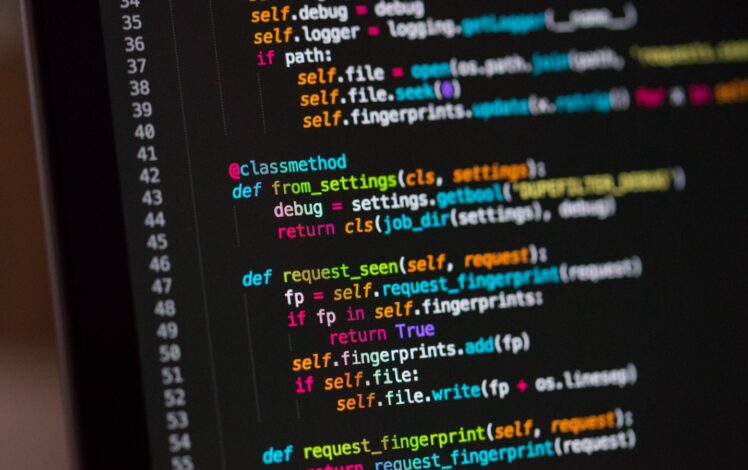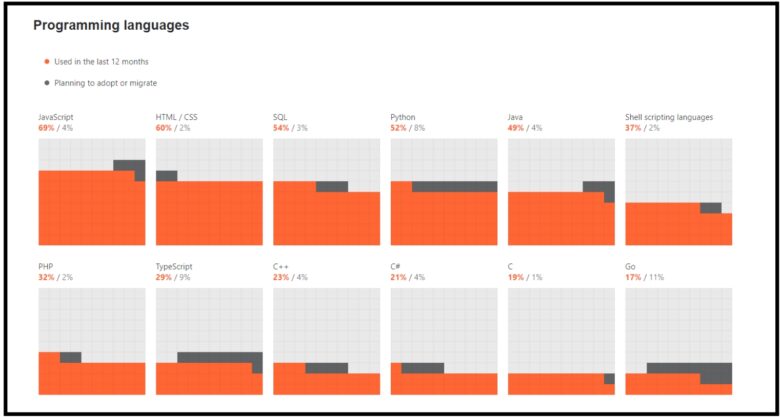Java is a popular option for scientific projects and a key language for Android development. Java has been at the top of the list for more than ten years, despite the rising popularity of Go and Python.
However, because of its verbose code and a few structural issues that developers want fixed, it does have the feel of a legacy programming language. Particularly in 2024, when the no-code revolution is sweeping the globe, Java needs to evolve and grow if it hopes to gain more traction. Here, we’ll look at some of the most frequently requested features from the developer community, as well as the weaknesses it needs to overcome to reclaim the top spot in the programming world.
Brush up on your Java skills by reading some Must Know Java Questions for Beginners.

The TIOBE Index for Java (October 18th 2024 shows a downward trend due to verbose API, poor backward compatibility, open source adoption for which developers are requesting a change)
Contents
Better Version Management
According to recent Stackoverflow surveys, many developers seek hassle-free version switching. Although certain IntelliJ plug-ins do support this, it is still an experimental functionality that is not yet generally used or approved. The Java community should create tools to let developers maintain their lifecycle without too much hassle by switching from outdated packages and modules to newer ones.
Less Verbose Code
A verbose code is one that employs an excessive number of words. Long, overly intricate phrases make code harder to read and scan. Many advanced languages have a tendency to generate too much noise while attempting to mimic English. Python’s code is more comprehensible than Java’s when compared to it since it doesn’t use semicolons, employs the operators “and,” “or,” and “not” rather than Java’s “&&,” “||,“ and”! “, and usually requires fewer formatting elements like curly brackets or parentheses.
Java is possibly the most verbose language available and is still widely used. Due to the Java API, users must write a lot of code to complete even the smallest tasks. Experts are looking for better systems to transition to, considering Java to be a legacy programming language that shadows its wonderful architecture.

Source: medium.com
Security Improvements
Since many developers simply learn “just enough” to get by and complete their feature work, those that specialize in security are the true experts. This is a popular topic since developers are taking on more and more responsibility for application security. The majority of Java developers would prefer to avoid having to start from scratch by having a better integrated security solution in place. Developers are in high demand for this subject, whether it is for improved handling of API keys utilizing environment variables or for cryptography.
Revoking commercial license
Oracle has disclosed that beginning in 2019, “business, commercial, or production” use of Java Standard Edition 8 would incur fees. You must pay per user or per processor in order to receive all new updates and bug fixes. For general purpose computing, the most recent version of Java is now available for free download. Each organization must assess the amount of Java they use and seek an alternate technology if the price increase appears to be too harsh in order to get ready for the transition.

Source: mooc.org
Performance Optimization
Due to the virtual machine’s compilation and abstraction level, any high-level language must struggle with poor performance. It’s not the main cause, though, of Java’s much criticized speed. Consider the trash collector, a helpful function that, sadly, may cause serious performance issues if it consumes more than 20% of CPU time. Poor caching settings might also lead to excessive memory and garbage collection usage. Due to its greater processing and memory needs, the Java language is a little more expensive which developers find troublesome. For the Java software to execute properly, we need better hardware.
Open Source Adoption
Due to inadequate entry-level coaching, inadequate documentation, lax contribution requirements, or deprecated packages, some novice developers are reluctant to contribute to Java-based open source systems. In contrast to contemporary solutions created using Node and Python, Java-based apps are also relatively challenging to package, deploy, and administer on the cloud. Open source is still largely what it has always been: the province of a small group of devoted developers. There is still more work to be done when it comes to Java, despite the fact that the advent of GitHub and other readily accessible code repositories has encouraged developers to donate their code. More than one in two developers has never contributed to an open source project.

Java ranks #5 based on the JetBrains 2024 Java Developers Survey
Upgrading the GUI Toolkit
Developers are requesting a better in-built design for the graphical user interface (GUI) of a software product using Java. Java clearly falls short when it comes to the desktop user interface compared to Android Studio and Flutter. The most common GUI builders available to Java programmers are Swing, SWT, JavaFX, and JSF. Swing is a dated yet dependable cross-platform library that is already included in some Java IDEs, such as Eclipse and NetBeans. However, developers are tired of UI inconsistencies unless you’re utilizing templates and want a better solution in 2024. Although SWT employs native components, complex UIs are not a good fit for it. Although JavaFX has a sleek and contemporary appearance, it lacks maturity. Overall, further investigation is needed to select a good fit for your Java GUI development.
You are sure to get a good start on Java Backend with this course by learning Java programming, packages and multi-threading, XML and JDBC, Apache Maven, and more. Utilize the tools and skills you learn in this course to work on a variety of actual industry projects while being guided by professionals in the field. Get your dream job, a BI Certificate, and placement support!
